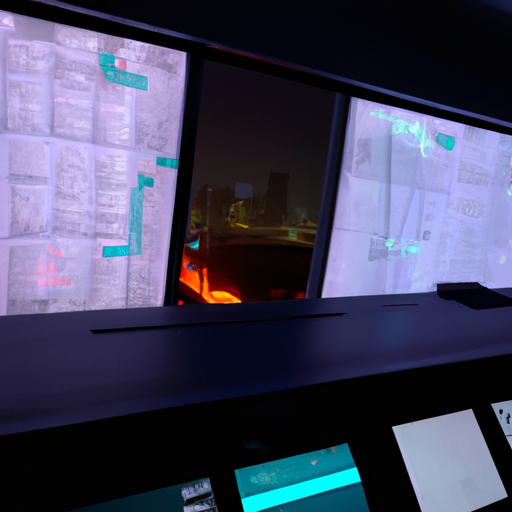
The Impact of Technology on Work-Life Balance in the Digital Era
The digital era has brought about many advancements and conveniences in our lives. From the ability to work remotely to the ease of communication, technology has undoubtedly made our lives easier in many ways. However, it has also presented us with new challenges, particularly when it comes to balancing work and family.
One of the biggest impacts of technology on work-life balance is the blurring of boundaries between work and personal life. With smartphones and laptops, we are constantly connected to our work, even when we are supposed to be off the clock. Emails can be checked and responded to at any time, and work-related tasks can be completed from the comfort of our own homes. While this may seem convenient, it can also lead to a lack of separation between work and personal life, making it difficult to truly disconnect and relax.
Another challenge that technology has brought is the expectation of constant availability. With the ability to be reached at any time, employers and clients often expect immediate responses and quick turnarounds. This can create a sense of pressure and stress, as individuals feel the need to always be “on” and responsive. It can be difficult to set boundaries and prioritize personal time when there is an expectation of constant availability.
Furthermore, technology has also increased the amount of work that can be done in a day. With the ability to work remotely and access work-related documents and information from anywhere, individuals may find themselves working longer hours and taking on more tasks. This can lead to a feeling of overwhelm and exhaustion, as the line between work and personal life becomes increasingly blurred.
In addition to the challenges of work-life balance, technology has also impacted the quality of family time. With the constant distractions of smartphones and social media, it can be difficult to fully engage and be present with our loved ones. Instead of spending quality time together, we may find ourselves scrolling through our phones or checking work emails. This can lead to feelings of guilt and a sense of missing out on important moments with our families.
Despite these challenges, there are steps that can be taken to help balance work and family in the digital era. Setting clear boundaries and establishing designated times for work and personal life can help create a sense of separation. This may involve turning off work notifications during personal time or designating specific hours for work-related tasks. It is also important to communicate these boundaries with employers and clients, so that they are aware of your availability and can respect your personal time.
Additionally, it is important to prioritize self-care and make time for activities that bring joy and relaxation. This may involve setting aside time for hobbies, exercise, or spending quality time with loved ones. By making self-care a priority, individuals can recharge and better manage the demands of work and family.
In conclusion, the digital era has brought about many challenges when it comes to balancing work and family. The blurring of boundaries between work and personal life, the expectation of constant availability, and the increased workload can all make it difficult to find a healthy balance. However, by setting clear boundaries, prioritizing self-care, and communicating with employers and clients, individuals can navigate these challenges and find a sense of balance in the digital era.
Strategies for Managing Work and Family Responsibilities in the Digital Age

The digital era has brought about many advancements and conveniences in our lives. From the ability to work remotely to the ease of communication, technology has made it easier than ever to stay connected and productive. However, with these advancements also come challenges, particularly when it comes to balancing work and family responsibilities.
One of the biggest challenges in the digital era is the blurring of boundaries between work and personal life. With smartphones and laptops, it’s easy to be constantly connected to work, even when we’re supposed to be off the clock. This can make it difficult to separate work time from family time and can lead to feelings of burnout and stress.
To effectively manage work and family responsibilities in the digital age, it’s important to establish clear boundaries. This means setting specific times for work and personal activities and sticking to them. For example, you might decide that after 6 p.m., you will not check work emails or take work calls. By setting these boundaries, you can ensure that you have dedicated time for your family and personal life.
Another strategy for managing work and family responsibilities is to prioritize tasks and activities. In the digital age, it’s easy to feel overwhelmed by the constant stream of information and demands. By prioritizing tasks and activities, you can focus on what’s most important and let go of the rest. This might mean saying no to certain work projects or delegating tasks to others. By doing so, you can free up time and energy for your family and personal life.
In addition to setting boundaries and prioritizing tasks, it’s also important to take care of yourself. The digital era has made it easier than ever to be constantly connected and available, but this can take a toll on your well-being. It’s important to make time for self-care activities, such as exercise, hobbies, and relaxation. By taking care of yourself, you can recharge and be more present for your family and work responsibilities.
Communication is another key strategy for managing work and family responsibilities in the digital age. With the ability to communicate instantly, it’s important to be clear and open about your needs and expectations. This might mean having a conversation with your employer about your work-life balance or setting boundaries with your family members about your availability. By communicating your needs and expectations, you can ensure that everyone is on the same page and can work together to find solutions.
Finally, it’s important to be flexible and adaptable in the digital era. Technology is constantly changing, and so are our work and family responsibilities. By being open to new ways of doing things and willing to adjust your routines and strategies, you can better navigate the challenges of balancing work and family in the digital age.
In conclusion, the digital era has brought about many challenges when it comes to balancing work and family responsibilities. However, by setting boundaries, prioritizing tasks, taking care of yourself, communicating effectively, and being flexible, you can successfully manage both aspects of your life. Remember, it’s not about achieving a perfect balance, but rather finding a harmony that works for you and your loved ones.
Overcoming the Challenges of Work-Life Integration in the Digital Era
The digital era has brought about many advancements and conveniences in our lives. From the ability to work remotely to the ease of communication, technology has made it easier than ever to stay connected and productive. However, with these advancements come new challenges, particularly when it comes to balancing work and family life.
One of the biggest challenges in the digital era is the blurring of boundaries between work and personal life. With smartphones and laptops, we are constantly connected to our work, making it difficult to switch off and focus on our families. It can be tempting to check emails or respond to work-related messages even during family time, leading to a lack of presence and engagement with our loved ones.
Another challenge is the pressure to always be available. In the digital era, there is an expectation of immediate response and constant availability. This can make it difficult to set boundaries and prioritize family time. The fear of missing out or falling behind at work can lead to a constant state of stress and anxiety, making it challenging to fully enjoy and be present with our families.
Additionally, the digital era has created a culture of busyness and productivity. With the ability to work from anywhere at any time, there is a constant pressure to be productive and achieve more. This can lead to a neglect of family time and a lack of work-life balance. The constant need to be connected and productive can take a toll on our mental and physical well-being, as well as our relationships with our families.
Despite these challenges, there are ways to overcome them and achieve a better work-life integration in the digital era. One strategy is to set clear boundaries between work and personal life. This means establishing designated work hours and sticking to them. It also means creating a physical separation between work and personal spaces, such as having a dedicated office or workspace. By setting these boundaries, we can create a sense of structure and routine that allows us to be fully present with our families when we are not working.
Another strategy is to prioritize self-care and well-being. It is important to take breaks and recharge, both physically and mentally. This can include activities such as exercise, meditation, or spending quality time with loved ones. By taking care of ourselves, we can better manage the demands of work and family life, and avoid burnout.
Communication is also key in achieving work-life integration. It is important to have open and honest conversations with our employers and colleagues about our boundaries and expectations. By setting clear expectations and communicating our needs, we can create a supportive work environment that allows for a better balance between work and family.
Finally, it is important to be mindful of our technology use. While technology can be a great tool, it can also be a source of distraction and stress. Setting limits on our technology use, such as turning off notifications or designating specific times for checking emails, can help us be more present and engaged with our families.
In conclusion, balancing work and family in the digital era can be challenging, but it is not impossible. By setting clear boundaries, prioritizing self-care, communicating effectively, and being mindful of our technology use, we can overcome these challenges and achieve a better work-life integration. It is important to remember that our families are our priority, and by finding a balance, we can create a fulfilling and meaningful life in the digital era.


